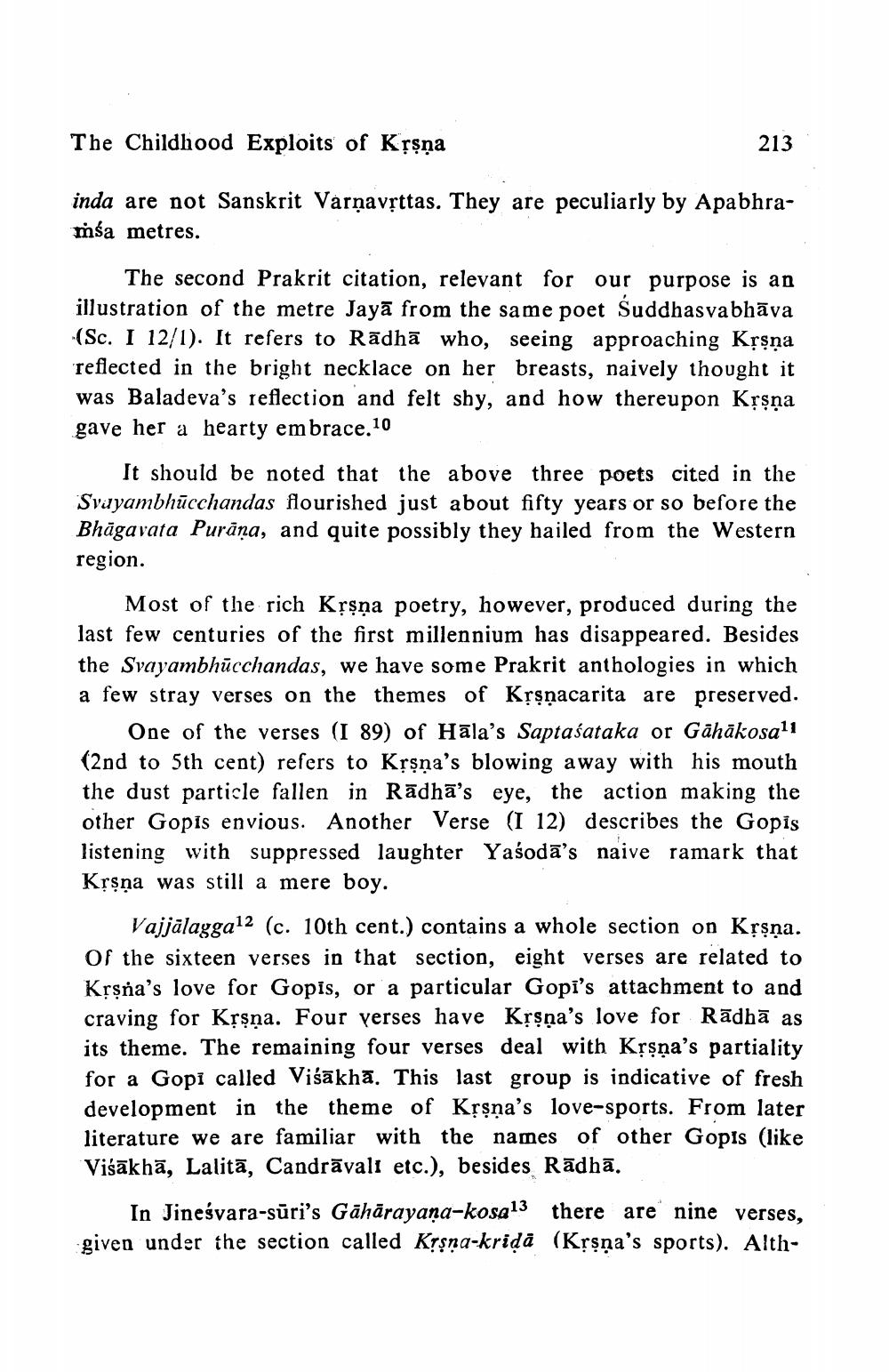________________
The Childhood Exploits of Krşņa
213
inda are not Sanskrit Varņavrttas. They are peculiarly by Apabhramśa metres.
The second Prakrit citation, relevant for our purpose is an illustration of the metre Jayā from the same poet Suddhasvabhāva (Sc. I 12/1). It refers to Rādhā who, seeing approaching Krşņa reflected in the bright necklace on her breasts, naively thought it was Baladeva's reflection and felt shy, and how thereupon Krşņa gave her a hearty embrace.10
It should be noted that the above three poets cited in the Svayambhūcchandas flourished just about fifty years or so before the Bhāgavata Purāņa, and quite possibly they hailed from the Western region.
Most of the rich Kșşņa poetry, however, produced during the last few centuries of the first millennium has disappeared. Besides the Svayambhūcchandas, we have some Prakrit anthologies in which a few stray verses on the themes of Krşnacarita are preserved.
One of the verses (I 89) of Hāla’s Saptaśataka or āhākosali (2nd to 5th cent) refers to Krsna's blowing away with his mouth the dust particle fallen in Rādhā's eye, the action making the other Gopis envious. Another Verse (I 12) describes the Gopis listening with suppressed laughter Yaśodā's naive ramark that Krşņa was still a mere boy.
Vajjālagga12 (c. 10th cent.) contains a whole section on Krşņa. of the sixteen verses in that section, eight verses are related to Krsna's love for Gopis, or a particular Gopi's attachment to and craving for Krşņa. Four verses have Krşņa's love for Rādbā as its theme. The remaining four verses deal with Krşņa's partiality for a Gopi called Viśākhā. This last group is indicative of fresh development in the theme of Kșşņa's love-sports. From later literature we are familiar with the names of other Gopis (like Viśākhā, Lalitā, Candrāvali etc.), besides Rādhā.
In Jineśvara-sūri's Gāhārayaņa-kosa13 there are nine verses, given under the section called Kệşna-kridā (Krsna's sports). Alth




